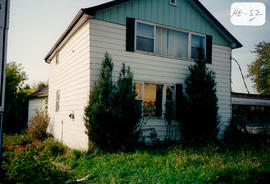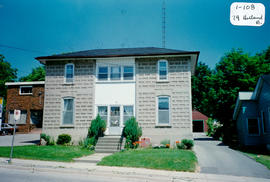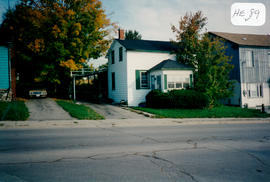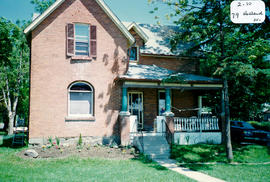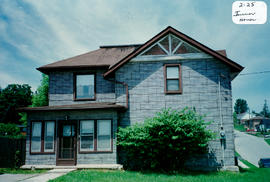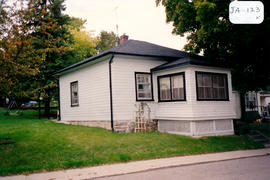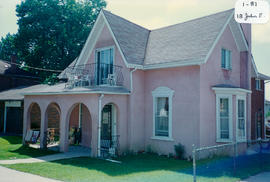- CA BWGPL GJ-HB-2017-03-25-06
- Item
- 1995
Parte de George Jackson fonds
The two-storey, frame building in this photo (from 1995) was once located at 52 Holland St. East. It and sat on a narrow lot and had long sheds at the back. Several families lived here over the years, including Joe Graham, his wife, and sons Leonard, Ogil, Weldon, Gilford, Leeson and Donald. Joe was a semi-retired farmer from the Cookstown area and he ran a farm on Concession 6 on the south side (west of Simcoe Road). The boys had a butcher shop and Weldon trucked, hauling coal for the dredge on the big canal and fill for the dam from Simcoe Street. Harold Boyd eventually bought the property. He had Sinclair MacDonald remodel the structure and add a rental apartment upstairs. Harold’s daughter and her family lived in the rental apartment before the building was demolished in the 1990’s. A plaza was later built on this (and the adjoining McLain) property. (1, 2)
Sem título

